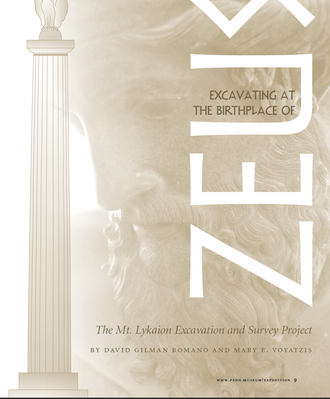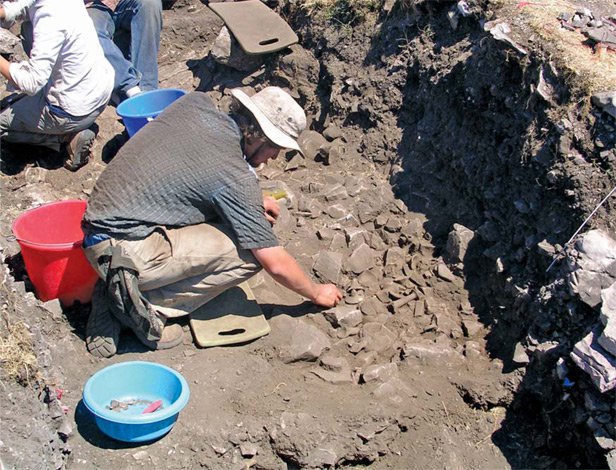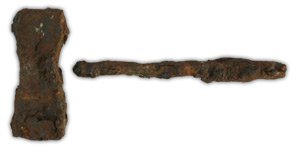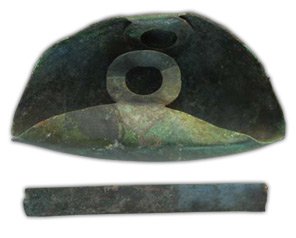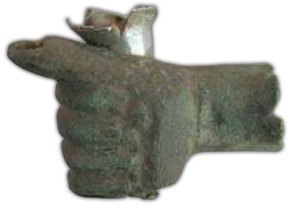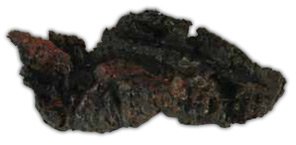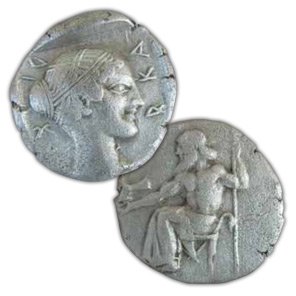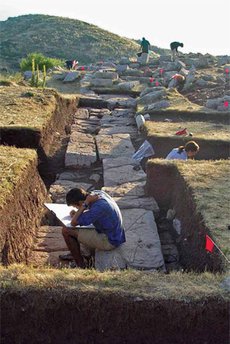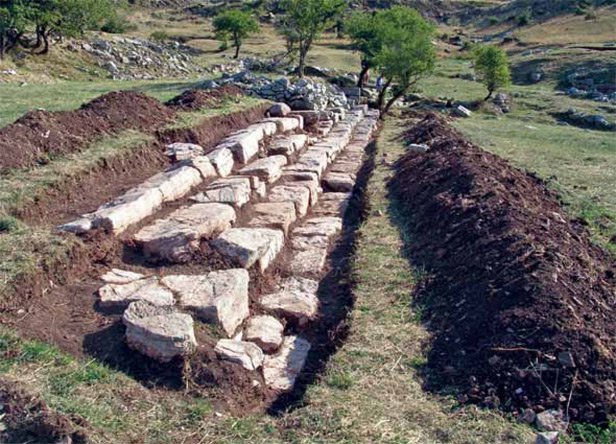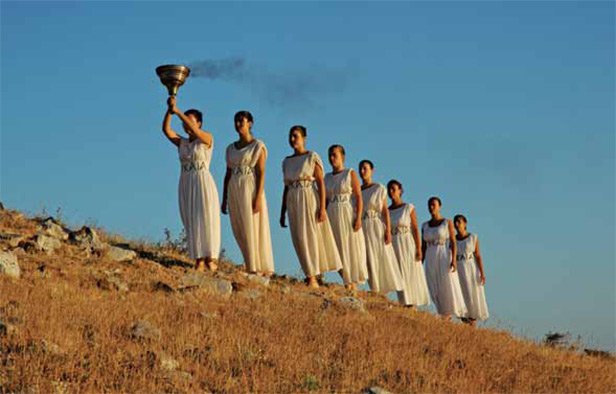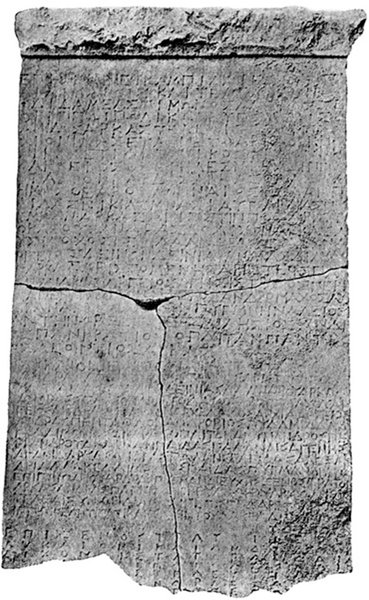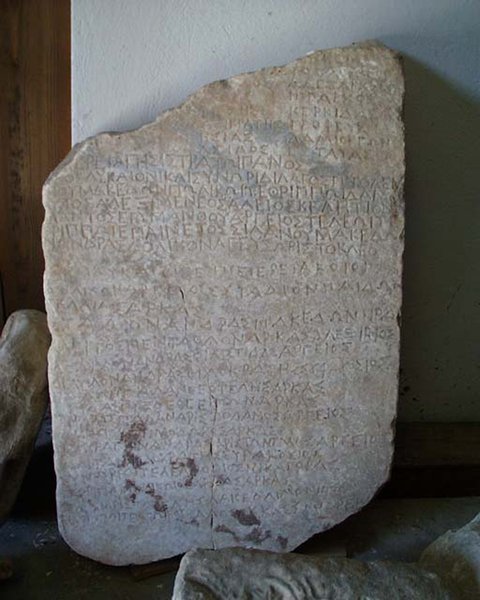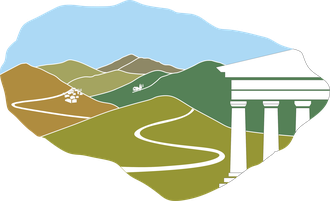Introduction to Mt. Lykaion
In the ancient Greek region of Arcadia in the southwestern Peloponnesos, the sanctuary of Zeus on Mt. Lykaion stands out for its great fame, mysterious rituals and wide-ranging significance.
The site of Mt. Lykaion, located 17 km. to the west of Megalopolis on the modern-day mountain of Agios Elias or Profitis Elias, held fascination for the ancient Greeks and has continued to be important for modern-day scholars of archaeology, classics, and Greek religion. Pausanias described the sanctuary of Zeus in great detail in his Guide to Greece (8.38.2-8.38.10) and indicated that the whole mountain was considered a sacred place by ancient Greeks. It was identified in Greek mythology as the birthplace of Zeus (at Cretea) and, according to Pausanias, there was a stadium and hippodrome in which athletic games for the Lykaion festival were held, a sanctuary of Pan, and, at the summit, a formidable temenos and altar of Lykaion Zeus. In front of the altar, Pausanias says, there were two columns crowned by gilded eagles.
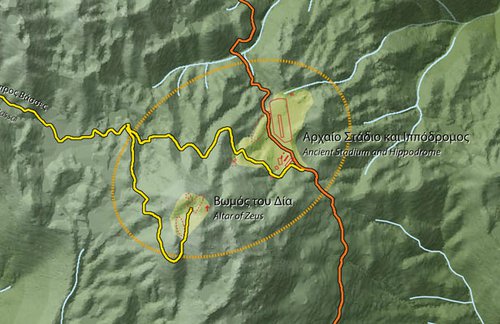
Map of the area of the southern peak of Mt. Lykaion, showing the area of the upper sanctuary on the left and the lower sanctuary to the right. Map by Mark Davison.
Previous Research of the Area
Mt. Lykaion was investigated more than 100 years ago by representatives of the Archaeological Society of Athens under K. Kontopoulos, briefly in 1897 (AE 1898) and by K. Kourouniotis in 1902 (Praktika 1903, 50 ff; AE 1904, 153ff). K. Kontopoulos dug a few trial trenches in the area of the hippodrome and in the altar. K. Kourouniotis then excavated a portion of the altar and the temenos a few years later. He found that the altar consisted of a mound of blackened earth, 30 meters in diameter at the top and approximately 1.5 meters high. The earth of the altar contained burnt stones, many small animal bones, tiny fragments of 5th and 4th century BC pottery, iron knives, clay figures, coins from Aegina, a clay figure of a bird, and two small bronze tripods. K. Kourouniotis found no evidence of human bones, only animal bones (mostly cow and pig). In the eastern part of the temenos, he found a number of bronze human figurines, some iron objects and roof tiles as well as the two column bases (probably those mentioned by Pausanias and first found by K. Kontopoulos). In 1909, K. Kourouniotis excavated the area to the east and below the summit of Lykaion, where the hippodrome, stadium, xenon, stoa, monuments and bathhouse were located (PAE 1909, 185-200). Although he searched for the sanctuary and grove of Pan mentioned by Pausanias, he did not find it. Based on the finds recovered by K. Kontopoulos and K. Kourouniotis, activity at the altar was dated as early as the late 7th century B. C. and the site appeared to have reached its peak of activity in the Classical period. By the time Pausanias visited Mt. Lykaion in the 2nd century AD, the athletic contests had been transferred elsewhere and apparently the site was no longer in use.
The sanctuary of Zeus on Mt. Lykaion was not systematically investigated again until 1996, when Dr. David Gilman Romano of the University of Pennsylvania Museum conducted a new architectural and topographical survey at the site. Romano had argued in his dissertation on Greek stadia that Mt. Lykaion's stadium was one of the most important in the Greek world (Stadia of the Peloponnesos, Ph.D. Dissertation, University of Pennsylvania, 1981). Romano and others have noted that the hippodrome is the only extant and visible example in the Greek world. Scholars of Arcadian cults and religion have also analyzed the site, resulting in numerous publications (e.g., M. Jost, Sanctuaires et cults d’Arcadie, 1985). Recent research on sanctuaries in Arcadia indicates that this site developed very differently from any other sanctuary in the region (M. Voyatzis, “The Role of Temple Building in Consolidating Arkadian Communities,” in Defining Ancient Arkadia, T.H. Nieslen and J. Roy (eds.) 1999). Anthropologists have studied the possibility of human sacrifice at Mt. Lykaion and the evidence of comparable accounts from other cultures.
Mt. Lykaion had never been scientifically studied until Romano's survey. This fact is surprising, given the importance of Mt. Lykaion, including its significance for ancient Arcadians of the Classical period who viewed it as a symbol of Pan-Arcadian unity, its standing among the Pan-Hellenic athletic festivals, the presence of several unique architectural elements, and its mysterious and secret rituals. The current ongoing investigation of the site, by an international, multi-disciplinary team, has uncovered invaluable information that has broadened our understanding of Mt. Lykaion.







